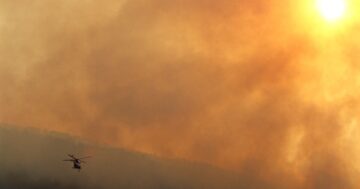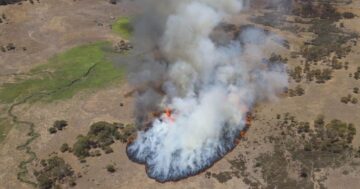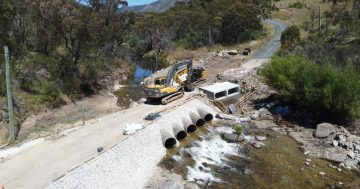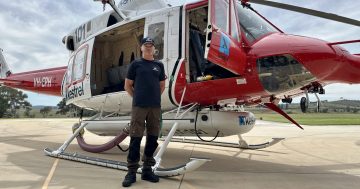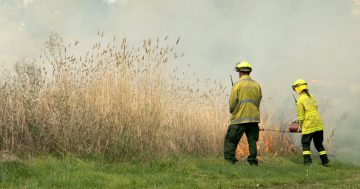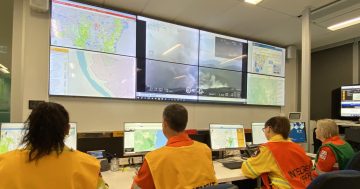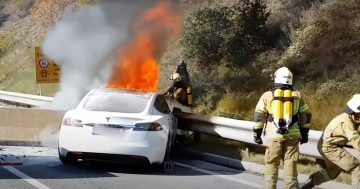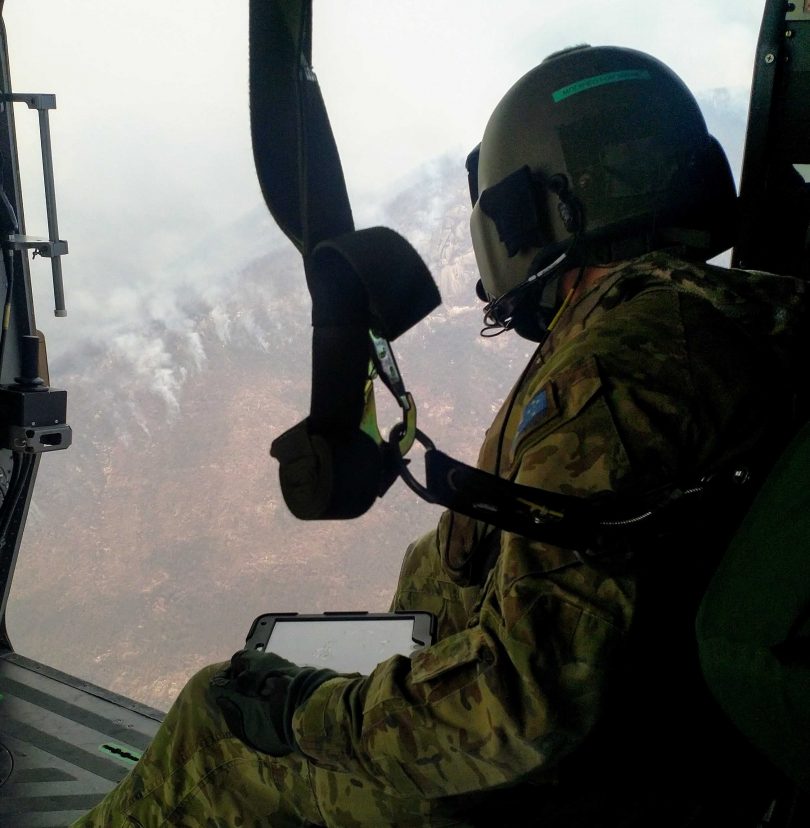
A loadmaster from the Australian Army views the Orroral Valley fire on 29 January. Photo: Michael Weaver.
The crew of the helicopter that sparked the ACT’s worst fire since 2003 did not radio the blaze’s location to the ACT Emergency Services Agency (ESA) because the radio traffic focused on the crew’s safety, the Department of Defence has said.
The fire was started by a faulty landing light on the MRH-90 helicopter, which sustained damage from the nascent blaze and returned to Canberra Airport for an emergency landing.
The flight took 45 minutes and crews reported the location of the fire to emergency services personnel once they had landed.
Once airborne, the crew relayed the “in-flight emergency situation” to Canberra Air Traffic Control and their higher military commanders, a Defence spokesperson said.
“The ACT ESA became aware of the fire in accordance with their protocols and responded within 20 minutes,” they said.
“The exact location of the fire was provided to ACT ESA immediately following an emergency landing at Canberra Airport.
“The crew were appropriately focused on returning the aircraft’s occupants to safety. Notifications were made as soon as was reasonably practicable.”
It took the ESA 17-minutes to spot the smoke from the fire at its Mount Tennent fire tower and the location was finally confirmed by a spotter aircraft around 48 minutes after ignition and 29 minutes after the smoke has been seen.
What became known as the Orroral Valley fire eventually burnt 78 per cent of the Namadgi National Park and 22 per cent of Tidbinbilla.
A Defence spokesperson defended the 45-minute flight, saying that the safest course of action was to land at Canberra Airport as opposed to a closer site.
“At the time of the incident, the crew determined that the aircraft, in particular its undercarriage, was damaged by the fire, but they were unsure of the extent of the damage,” the spokesperson said.
“They were in an in-flight emergency situation. As such, they had to balance the risk of continuing flight with a damaged aircraft, with the risk of landing immediately with damaged undercarriage in an area of questionable safety and without emergency services available.
“The crew decided that the safest course of action was to land at Canberra Airport, as the nearest safe landing area; a decision recognised by senior aviation supervisors as most appropriate given the circumstances.”
Internal Defence logs obtained by the ABC revealed that the crew was issued with a “blackout message” to “advise no external comms regarding work activities” just minutes after landing.
Defence did not confirm that the helicopter was the source of the ignition to ESA Commissioner Georgeina Whelan or Chief Minister Andrew Barr until the following afternoon, despite having talking points that were fact-checked and ready for release by 5:20 pm.
The ESA said it was satisfied with the flow of information with Defence.
“The ACT ESA is satisfied that the ADF followed their safety protocols in relation to reporting of the incident and that the information flow was consistent and appropriate between ACTESA and ADF,” an ESA spokesperson said.












